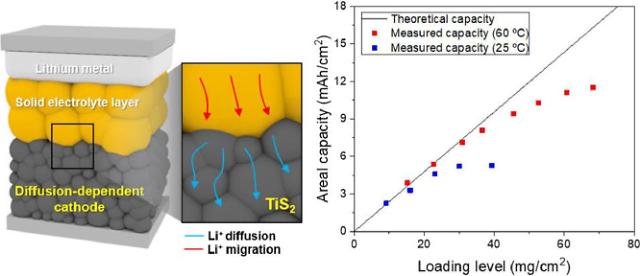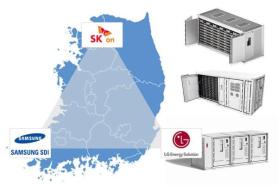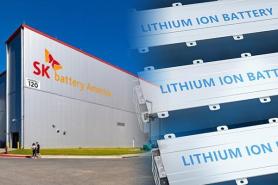
[Courtesy of ETRI]
SEOUL -- South Korean researchers have developed a new electrode structure for an all-solid-state secondary battery that does not have any kinds of electrolytes used to create an electrically conducting solution. The new structure is easier and cheaper to produce.
An ordinary all-solid-state battery (ASSB) uses composite-type solid electrolytes instead of liquid electrolytes. ASSBs are considered the future power source for electric vehicles as solid electrolytes are nonflammable and more stable. They can have higher energy density than lithium-ion batteries depending on electrode materials -- anode and cathode.
The Electronics and Telecommunications Research Institute (ETRI) said in a statement on July 13 that the institute and the Daegu Gyeongbuk Institute of Science and Technology (DGIST) collaborated to develop a new ASSB electrode structure using titanium disulfide (TiS2).
Normally, an electrode is made of four parts -- conductive materials, solid electrolytes, active material for energy storage, and binders that physically and chemically harness all parts. The newly developed structure features an active material made with highly compressed TiS2 and binders.
Through tests, researchers found that lithium-ion was effectively transported and dispersed through TiS2 electrodes. The new electrode structure can reach about 1.3 times higher in energy density than solid electrolytes. "Based on this technology, we will acquire more core technology and contribute to the commercialization," ETRI research Lee Young-ki was quoted as saying.
Copyright ⓒ Aju Press All rights reserved.




